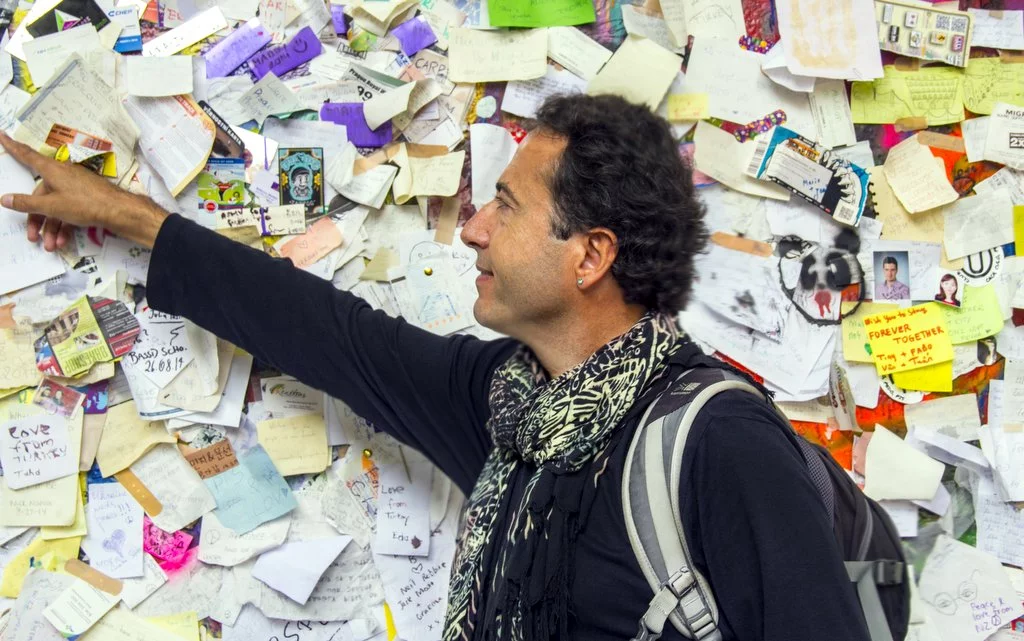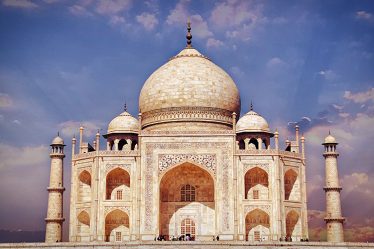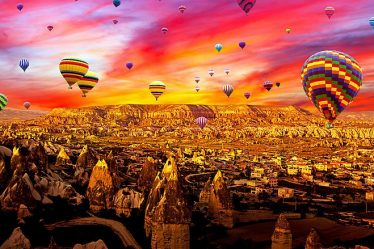
Central Europe has started to enter the routes of many tourists with its magnificent cities to see. Central Europe, where traces of the past can be found everywhere you step, draws people in with its historical and artistic streets that carry its historical heritage. Central European cities, which are very close to each other but host very different cultures, attract a lot of attention with their cultures that still maintain their ties with the past, local cuisines, history and unique architectural texture.
Central Europe is a different place that takes people to another dimension and takes them on a journey through the pages of the past. Central European tours are so popular these days that I must be impressed too. Last year (2014) I had the opportunity to visit the cities of Central Europe from mid-August to late September. Even though I was visiting some of them for the second time, I thoroughly enjoyed my trip.

Prague-Budapest-Vienna-Tour
The countries in the region, located between the Baltic Sea and the Adriatic, are Germany, whose social and cultural life is extremely rich; Austria, whose streets smell like coffee; Czechia with its streets smelling of history; Liechtenstein, the tiny country famous for its castles; Hungary and Poland, members of the now-defunct Warsaw Pact; Slovakia, which quietly separated from the Czech Republic; Slovenia, which left the former Yugoslavia and is now a member of the European Union, and Switzerland, with its breathtaking mountain views, are classified as Central European countries.
Central Europe covers a fascinating region where the heritage of the Middle Ages is well preserved, from architecture to culture, where similar but different cultural motifs take place, and where it is located in a geography that offers extraordinary beauties, from the world’s oldest ancient forests to the famous Alps.
Central Europe, which also hosts some of the cities that constitute the richest economies in Europe and the world, is a geography where Latin, Germanic and Slavic cultures merge. Located between the Baltic Sea and the Adriatic Sea, Central Europe, called the heart of Europe, means a journey to the Middle Ages for travelers.
The character of European cities, which host magnificent architectural works, will perhaps remain unchanged for many years, but since the Eastern European countries, which attract attention with their sophisticated features, are in a rapid change, I actually want to hurry up to understand their images of the past to some extent.
After traveling for a long time in Asia and Oceania, during my Balkan tour, I realized that I missed the streets, architecture and texture that gave the medieval atmosphere. Judging by the information provided by the best-selling tour operators, it seems that holidaymakers will make their travel preferences in the direction of the Central Europe tour this year. Yes, I agree too.
Watching the city lights from Budapest Castle, walking on Prague’s stone bridges decorated with statues, listening to the magnificent musical heritage of Vienna, relaxing and sipping espresso in one of Heidelberg’s delicious cafes… These fascinate me, and I’m sure they will seduce you too.
CONTENTS GUIDE ▽
The Most Beautiful Central European Cities to See
- Prague, Czech Republic
- Budapest, Hungary
- Vienna, Austria
- Salzburg, Austria
- Bratislava, Slovakia
- Dresden, Germany
- Cesky Krumlov, Czech Republic
- Heidelberg, Germany
- Berlin, Germany
- Krakow, Poland
- Bled, Slovenia
- Gdansk, Poland
- Vaduz, Liechtenstein
- Friedrichshafen, Germany
- Sibiu, Romania
- Prague, Czech Republic
Vienna Prague Budapest tours
Prague, which was the capital of Bohemia for hundreds of years, is also a favorite city of Central European tours with its elegant bridges, cathedrals and unique architectural structures. The emotions I felt while wandering the cobblestone streets of the historical district are indescribable. II. The atmosphere of the Middle Ages can be seen almost everywhere in this lucky city, which managed to survive the World War almost unscathed.
The 9th century castle of Prague, the capital of the Czech Republic, the Old Town Square (Staromestske aka), Charles Bridge, Astronomical Clock, Old Town Bridge Tower (Stare Mesto) and St. Nicholas Church is one of the top places to visit. One should not return without tasting the world-famous Czech beers. Even though the Czechs are the most whining nation in Europe, the energy emanating from the multitude of tourists filling the streets can be felt in almost every street of the city. Prepare yourself for long walks!
- Budapest, Hungary
The favorite of Central European tours; Budapest
The favorite of Central European tours; Budapest
Budapest is one of my favorite and one of the cities I know best among the Central European cities. I can say that I became emotionally attached to this city, probably because I stayed for about 2 weeks and walked in many of its streets. Budapest, one of the most interesting cities in Central Europe, formed by the combination of the cities of Buda and Pest on both sides of the Danube River, is called the Paris of Central Europe. However, they have very different characters from Paris.
Despite its size, as the second largest city in the region after Berlin, it is very easy to get around on foot and with its advanced transportation system. Watching the unique view of the Danube River from Gellert Hill, which I have climbed 3 times, sitting in the delicious cafes of the Fisherman’s Bastion, which is on the UNESCO World Heritage List; Designed to breathe and be in touch with nature, Margaret Island, Gül Baba Tomb and Renaissance Palace should be added to the places to visit.
The boat tour on the Danube River should not be forgotten either. Once you’ve been there, you can’t leave without enjoying the famous hot springs. Ruin bars, which are converted old slums, are famous all over Europe. Visit at least one. Sometimes flight tickets to Budapest are as low as 99€. Estilo Fashion Hotel Budapest would be an excellent choice for accommodation.
- Vienna, Austria
Central-European-Schonbrunn-Palace
Schönbrunn Palace, Vienna
Vienna, the capital and largest city of Austria, is also known as the center of culture and art. Vienna, which has hosted important diplomatic and cultural events in Europe throughout history, is also a green city with nearly 30 percent of forests. It has always been at the top of the list of the world’s most livable cities for several years.
Malta
Offering many alternatives, the Schönbrunn Palace, the summer palace of the Habsburg Dynasty, is the most popular place for tourists in the city. I allotted 1 day to visit just this palace. In Vienna, which hosts one of the most important art collections in Europe, the Hofburg Palace, Vienna Opera House, City Hall, Kunsthistorisches Museum, Butterfly House and Belvedere Palace are among the must-see places.
St. Petersburg is one of the symbols of the city, which is considered the capital of Baroque and Art Nouveau. Stephan’s Cathedral is another must-see. There are incredible options for art lovers in Vienna, where different music festivals are held throughout the year. Be sure to try schnitzel, an Austrian delicacy.
- Salzburg, Austria
Salzburg-Central-Europe
Magnificent city Salzburg, Austria
Salzburg is also the city where composer Mozart, one of the symbols of Austria, was born. Salzburg and its surroundings, which I visited in October, made me fall in love with it. I like to travel without any expectations or prejudices about cities, but I honestly didn’t expect to be so impressed by Salzburg. Located at the foothills of the majestic Alps, the city has taken a firm place in my heart with its simple but impressive streets created by art and design.
The city, which means ‘Salt Castle’ and has managed to preserve the features of baroque architecture, attracts travelers with an interest in history. Salzburg, which gives the impression of walking in a natural painting, is also famous for its music festivals. The house where Mozart was born welcomes visitors as a museum today. Bicycle tours and sports activities along the Salzach River allow you to socialize with the locals.
The city was included in the UNESCO World Heritage List in 1997 due to its original architecture and protected structure. Mirabell Palace, Aigen Palace, Johannes Palace are among the recommended places to visit. I want to go again at the first opportunity and spend more time around Hallstatt and Wolfgangse, which resemble a fairy tale. Accommodation recommendation: Hotel Goldener Hirsch.
- Bratislava, Slovakia
Bratislava-Central-Europe
In Bratislava, one of the Central European cities, there are outdoor armchairs and bookshelves in the city center.
Bratislava, the capital of Slovakia, is built on the banks of the Danube River, just like other Central European capitals. Bratislava, which borders both Austria and Hungary, is also worth visiting with this feature. - attracts the attention of farmers. Bratislava, one of the most dynamic and young-populated cities in Europe, which I visited after Budapest, has a calm and serene atmosphere for a capital city.
- After seeing the peaceful Old Town; Bratislava Castle, Devin Castle, Clock Museum, National Museum, Weapons Museum, Mozart House, Jewish Culture Museum, Genocide Monument and Blue Church are among the places to be seen. Since Bratislava is built in a very small area, it is possible to explore most of the city on foot in a full day.
- If you come across it, sit on the sofa set up outdoors, browse magazines and books from the open-air library, and relax on the bean bags under the trees. Accommodation recommendation: Patio Hostel.
- Dresden, Germany
Dresden-Central-Europe
It’s hard to believe that this place was destroyed in World War II.
The city of Dresden is a place that has stood out for its cultural and artistic splendor for centuries. Founded in the valley on the Elbe River, in a region close to Germany’s border with the Czech Republic, the city, also known as the Florence of Germany, has been the capital of the German State of Saxony since the 15th century and has hosted the kings of Saxony for centuries. - Revealing the best examples of the Baroque reign, Dresden was built during World War II. Towards the end of World War II, although the war was over, three-quarters of the city was destroyed by two days of non-stop bombing by the Allies. The people of Dresden deserve to be appreciated for their devotion to the past and their hard work, whose monuments and historical buildings have been restored to their original state.
- Many impressive monuments, historical buildings and important bridges adorn every corner of Dresden. The yellow and pale green facades of the city, which remained within the borders of East Germany until the fall of the Berlin Wall, give a mysterious appearance. The Dresden Art Gallery, which looks as if it has been there for 1000 years, has the atmosphere of a museum city with its Zwinger, Opera House and other magnificent buildings.
- In the city, which is among the greenest cities in Europe; Botanical Garden, Zoo, Big Garden, Elbe Valley are among the places to visit. Also ask where the Kunsthofpassage is, go and see! I’m sure you’ll love it. The city of Dresden is located in eastern Germany, approximately 100 kilometers southeast of Leipzig.
- Turkish Airlines flies non-stop to Leipzig. You can easily reach Dresden by train from Leipzig Airport. The journey takes approximately one and a half hours. The distance between Berlin and Dresden is approximately two hours by train. The train station is almost in the heart of the city. You can reach many places by walking.
- WHERE TO STAY IN DRESDEN
- There are accommodation options for every budget in Dresden. I stayed at the ibis Dresden Zentrum in the city center. Steigenberger Hotel de Saxe, Star G Hotel Premium Dresden Altmarkt, Premier Inn Dresden City Zentrum and Hilton Dresden are other hotels that I like and where you can stay in a good location. a&o Dresden Hauptbahnhof and Hostel Mondpalast are affordable hostels you can choose.
Cesky Krumlov, Czech Republic
Cesky-Krumlov-Central-Europe
Cesky Krumlov is literally a fairy tale city
Cesky Krumlov is a charming town located 174 km south of Prague, the capital of the Czech Republic. Walking through the streets of the city seems to take you back a few hundred years. When I reached the town in the middle of the night after a long and indirect train journey from Vienna, the streets illuminated by the yellow lights of the city were empty.
As the streets of the town came to life with the new day and were filled with crowds of tourists, the taste of the medieval town of Cesky Krumlov that had made me fall in love with itself cheered up my soul. Cesky Krumlov, which is on the UNESCO World Heritage List with its gardens offering magnificent views and a well-preserved castle, is also known as the little brother of Prague. Located around the Vltava River, the town lies between Austria and the Czech Republic.
Malta
St. Vitus Church, Český Krumlov Castle, the old streets of the city and the Square, museums and art centers are among the places worth visiting. In the city where there are no large hotels, small hostels and boutique hotels host travelers on a tour of Central Europe. Accommodation recommendation: Hostel 99.
- Heidelberg, Germany
Heidelberg-Central-Europe
Heidelberg, one of the most beautiful cities in Germany
The other city that I fell in love with many years ago is Heidelberg, the most beautiful city in Germany. Founded in the valley between the Rhine and Neckar rivers, the heart of the city beats on Hauptstrasse street. Hauptstrasse, with its length of 1.5 km, is the longest street in Europe reserved for pedestrians only.
More than 30 thousand university students live in the city where Heidelberg University, the oldest university in the country, is located. You come across active young people riding bicycles, reading books on the streets of the city, and you are impressed by their dynamism. Cafes and restaurants, shops, hotels and bookstores, toy shops and souvenir shops line this lively Hauptstrasse street. The historical bridge over the Neckar River and Heidelberg Castle should definitely be seen.
- Berlin, Germany
Berlin-Germany-CentralEurope
Brandenburg, Berlin, Germany
Berlin, the capital of Germany and one of Europe’s exciting and popular cities, hosts millions of tourists every year. The city, which was reunited with the removal of the Wall of Shame, which was demolished in 1990 and became history, is one of the most vibrant cities in Europe. It is possible to encounter a festival almost every season in the city famous for its festivals.
Potsdamer Platz, located in the heart of the city center, the Brandenburg Gate, one of the symbols of Berlin, Alexander Platz, Gendarmenmarkt, Bellevue Palace and Berliner Dom, the famous cathedral of Berlin, are among the popular spots located to the east of the Reichstag.
Places such as the Museum District, the Berlin Wall Monument, the Jewish Memorial and Museum, and Ku’damm Street should also be added. There are countless activities to do in Berlin, whether you are visiting the markets selling second-hand goods or wandering around the city’s touristic museums and squares; This is a city that draws you in as you explore it.
- Krakow, Poland
Krakow-Poland-CentralEurope
Krakow, Poland, Central Europe
Krakow, one of the oldest and largest cities in Poland, built around the Vistula River, is known as the cultural center of the country. Krakow, which is also considered one of the best-preserved medieval cities in Europe, deserves the title of fairy tale city. How nice that he managed to come out of the war without any deep wounds!
Perhaps the two most important places to see in Krakow are Auschwitz Camp and Wieliczka Salt Mine. Also Old Town and Main Square, St. Mary’s Basilica, Krakow City Tower, Florian’s Gate and Krakow Castle, Archaeological Museum and Synagogue are among the top places to visit. Polish beers of different colors appear before you with surprising prices.
Parties organized by Erasmus students from many European countries are the main reason why the name Krakow is mentioned more frequently on social media. The city, which is more famous than the capital of the country, is also among the most beautiful cities in Europe. Most people claim that Krakow’s nightlife is one of the best in Europe. Accommodation and entertainment prices are both more economical than other popular cities.
- Bled, Slovenia
Bled, Slovenia
Bled, Slovenia
Bled, known for its ice age lake in Slovenia, hosts many tourists. The city, which attracts attention in all seasons due to its temperate climate and proximity to many countries in Central Europe, promises a wide range of sports activities. Bled, visited by nature sports enthusiasts such as golf, fishing, horseback riding, hunting and mountain climbing, attracts attention with its unique views.
The city, which is considered one of the most important recreation centers in Central Europe, is also known for its congresses and camping areas for athletes. The island and church on Lake Bled attract attention as an important attraction for those who visit the city. Combining Austrian manners, Italian aesthetics and Balkan warmth in its character, Sl
They are very naive people. Every town I visit and every person I meet has a special place in my heart.
- Gdansk, Poland
Gdansk-Poland-CentralEurope
Gdansk, Poland
Gdansk, which has been a problem between Germany and Poland for years, is today one of the important tourist attractions of Poland. Treaty of Versailles and World War II. The city, whose name was frequently mentioned during the developments during World War II, attracts attention with its important architectural structures that have managed to be preserved.
Gdansk, where you can freely wander the streets with its historical past, cultural elements and experience, is also an important port city with its coastline on the Baltic Sea. The city, which has the most notable nightclubs in the region with its nightlife, is called Danzig by the Germans. The Cathedral and Maritime Museum are worth seeing.
- Vaduz, Liechtenstein
Vaduz-Europe-Tours
Vaduz, the capital of the tiny country Liechtenstein
Vaduz, the capital of Liechtenstein, ranks last when compared to other European countries in terms of both surface area and population. While Vaduz, with a population of 5 thousand people, attracts tourists especially in the winter season, its structure suitable for winter tourism from December to the end of April provides an important alternative for those who love winter sports.
It is not possible to go directly to Liechtenstein, where there is no airport. It is necessary to go to the 160 km country from Switzerland or Austria by bus or private vehicle. Kunst Art Museum and Vaduz Castle are among the must-see places in Vaduz, the capital of Liechtenstein, the fourth smallest country in the world. Note that the castle is actually where the Prince of Liechtenstein lived. Walk around, take photos of the city from above, but don’t knock on the door! Even though you don’t see any military or police around, the prince lives there.
- Friedrichshafen, Germany
Friedrichshafen-Central-Europe
Friedrichshafen is on the edge of Lake Constance in Central Europe.
Friedrichshafen, whose name is difficult to read, is a small and charming place in the south of Germany, located on the edge of Lake Constance (Bodensee), which forms the common border with Switzerland, and looks more like a town than a city. During my trip planned with Turkish Airlines, going from Salzburg and returning to Friedrichshafen, I had the opportunity to visit this beautiful city and its surroundings, as well as Hallstatt, Vaduz, Innsbruck. There are wonderful villages, towns and nature in and around this region, which we have not even heard of.
Friedrichshafen, which offers the atmosphere of a holiday center with its cafes and restaurants along the lakeside, is a peaceful and very quiet place. Since it was the first city to produce the zeppelin, an aircraft, it is also described as the zeppelin city. When you scan the sky, you can see the giant oval balloon airship floating slowly in the sky. For those who wish, there is also a wonderful museum where you can explore the world of airships.
The medieval city of Meersburg, built on the shores of Lake Constance, 20 km west of Friedrichshafen, is a place worth seeing. While I was there, I considered myself very lucky because I came across a festival held once a year. Almost everyone in the marketplace and the streets was selling their products or accompanying the festival in medieval costumes. It was like being in the middle of a movie scene.
It is a good idea to include the charming town of Insel Mainau (Flower Island) and the Swiss city of Konstanz on your travel route. The town of Lindau near Friedrichshafen is also delightful.
- Sibiu, Romania
Sibiu, Romania
Sibiu, Romania
Sibiu is a city with a medieval atmosphere located in the Transylvania region of Romania. Sibiu, which was chosen as the European capital of culture in 2007, is a very striking place with its exquisite view, delicious cuisine, historical texture and colorful houses.
Sibiu is a delightful place with its 3 squares that fully reflect the medieval texture and 2 clock towers decorating it. The Great Square (Piata Mare) is the most popular place in the city. Liars Bridge is one of the symbols of the city. Brukental Museum is Romania’s first museum. Let’s take note of the city, which is 2-3 hours away from Bucharest by car.
Central Europe is one of the favorite regions on the route of many tourists with its magnificent cities to see. With its features that preserve the historical and cultural heritage from past to present, it offers travelers a museum city experience. In recent years, ‘Vienna Prague Budapest tours’ have started to rise to the top among travel lovers’ international holiday preferences, and in my opinion, they deserve this attention.
Go wander around the streets where history is not only seen but also smelled, among the magnificent buildings, sit in old cafes, relax in parks and green areas where you can feel and breathe nature, take river cruises, and see works of art in museums.
What are your favorite Central European cities that hold a special place in your heart?


